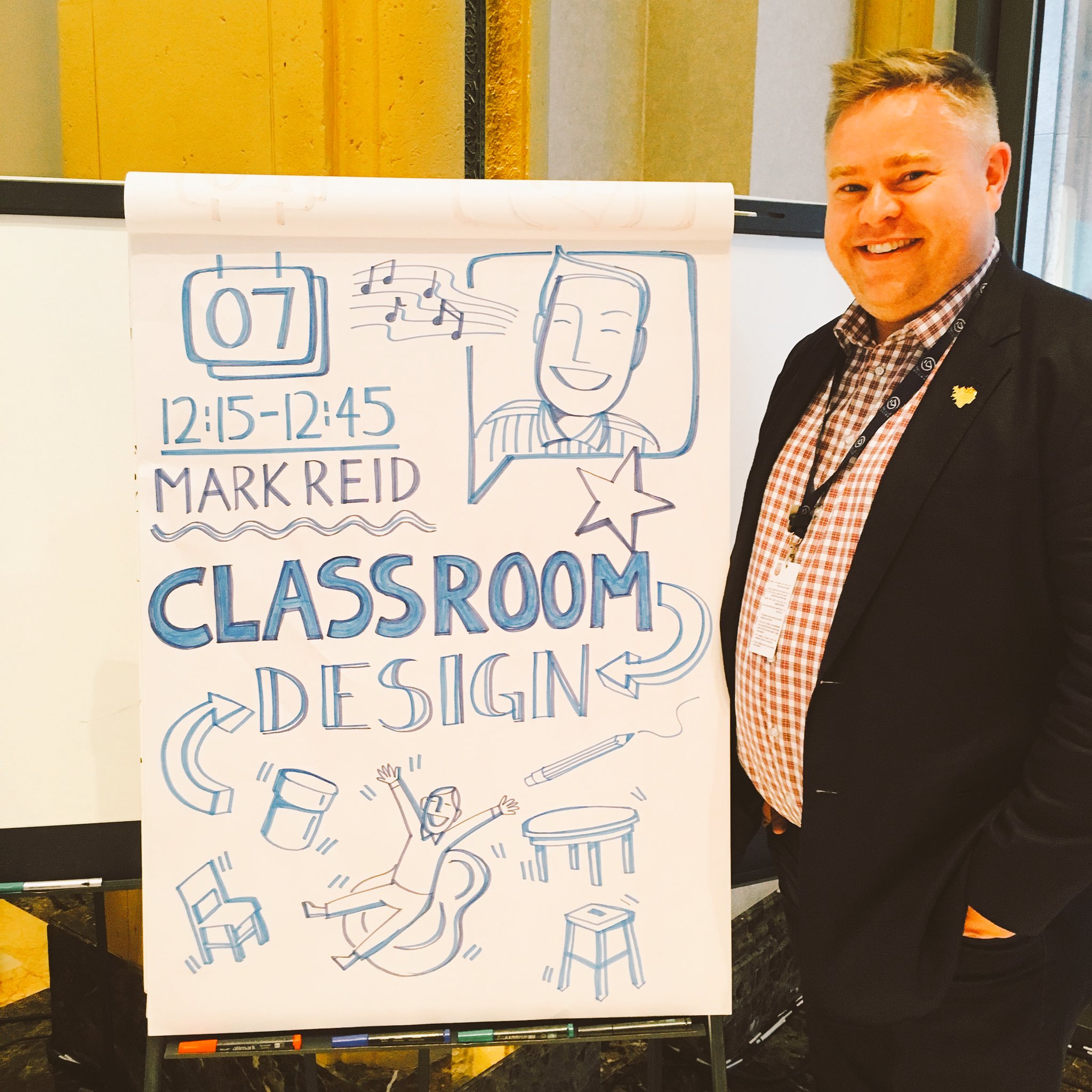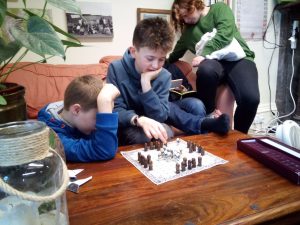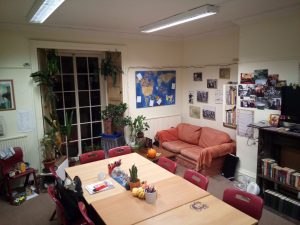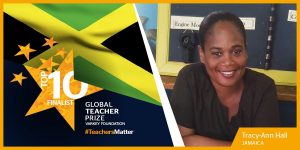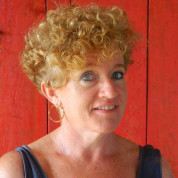
Miriam Mason-Sesay, Contributing Author
Freetown, Sierra Leone
![]() @EducAidSL
@EducAidSL
The conventional wisdom is that the best place for any child growing up is in their family. In an ideal world, where that family is financially stable and the family has the wherewithal to care for the emotional, social and welfare needs and rights of a child, then this is clearly the case. But, what about when the family is two or three adults who are surviving as subsistence farmers, palm wine tappers or fishermen who rarely see cash and are already trying to cope with a dozen or so more dependents? Is adding another mouth at the table, another body needing clothing, shelter and healthcare really likely to result in a life that is truly best for the child?
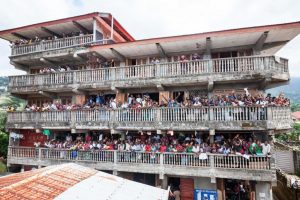
Far too often in Sierra Leone, this results in a less than positive ‘men pikin’[1] situation where the child becomes cheap labour and is viewed as an additional burden to be treated with as little joy and love as one would expect a dependent burden to be treated with.
What about, if instead of a relationship of total dependence, a relationship of interest and kindness can be maintained by regular visits and interactions between the child and her/his relations? What if the institution where the child lives, learns from the best of family life, to provide a secure home, a space where kindness, encouragement and love are the norm? A place where the child is valued as a member of a community, learns about her or his rights and responsibilities? A place there the child can easily access their welfare rights as well as social and emotional support while maintaining a relationship of concern with actual family relations?
This is the environment that EducAid has endeavoured to create for its most vulnerable, young family members. For many of our children, EducAid is a place to learn to live and love just as much as it is a place to learn maths and English.
How do we manage this in a resource-constrained context? Our learning spaces are also our living spaces. Our schools have to be flexible spaces that can be adapted for many uses. Traditional classrooms have groups of around 30 students encased in four walls and at the end of the day, the room is locked up and unused until the next morning. In EducAid, we need spaces that can be home to a great variety of activities: family meetings, lessons, after hours games, whole school debates, sleeping, eating and learning.
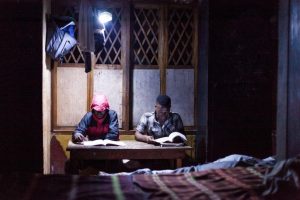 EducAid Lumley is a great case in point. My mother in law’s vegetable patch was the only available space when, in 2005, EducAid was obliged to move out of the rented house we had been using up to that point. The space was sufficient for one spacious room but not more. When it was impossible so spread out, we went up. Now, this unfinished building is learning space for over 500 young people during the day and living space for over 100 who do not have safe homes to go to where they can continue to study. The girls stay on the top floor. The boys are downstairs. Smaller spaces have been carved out of the 2nd floor to create the ICT room at one end and a science lab at the other end. To add space, we have windows that open completely, transforming the corridor / veranda along two walls doubling the lab’s size.
EducAid Lumley is a great case in point. My mother in law’s vegetable patch was the only available space when, in 2005, EducAid was obliged to move out of the rented house we had been using up to that point. The space was sufficient for one spacious room but not more. When it was impossible so spread out, we went up. Now, this unfinished building is learning space for over 500 young people during the day and living space for over 100 who do not have safe homes to go to where they can continue to study. The girls stay on the top floor. The boys are downstairs. Smaller spaces have been carved out of the 2nd floor to create the ICT room at one end and a science lab at the other end. To add space, we have windows that open completely, transforming the corridor / veranda along two walls doubling the lab’s size.
The blackboards that get used for small group explanations and demonstrations also double as cupboards where the live-in children keep their bag of clothes, their property and their sleeping mat and mosquito net.
After evening study, benches get packed together and mats placed across them to form a bed. Tables are upturned on each other to facilitate the hanging of mosquito nets. The electricity, which has been on for the previous 3 hours to make study time possible, is turned off. Silence slowly comes as over one hundred youngsters get their beauty sleep.
I sometimes come in late and make my way through the tangles of sleeping teens and, too often for my liking, find groups who have woken each other up for additional study during the night – gaining an education in Sierra Leone is a life or death issue, determining who will flourish and who may too easily be marginalised forever.
Yes – our schools are schools, so they are learning spaces, but they are so much more than this too!

[1] ‘Men pikin’ translates as ‘minded child’ i.e. foster child and happens a lot where children are left when parents die or are incapable of providing for them. It happens informally and with no supervision – it can work wonderfully sometimes but at others it can be severely abusive.
If you are interested in knowing more about EducAid’s work with vulnerable young Sierra Leoneans please go to www.educaid.org.uk
If you are interested in supporting our work in any way, please to go: www.educaid.org.uk/get-involved/

Miriam Mason-Sesay trained as a teacher at Cambridge and taught in the UK for eight years before visiting Sierra Leone – at that time the poorest country in the world. She was moved to relocate there and open a school for vulnerable children: ex-combatants, orphans and child-mothers. EducAid Sierra Leone, her nonprofit, started with twenty children and now educates over 2,500 students across nine primary and secondary schools. Due to a high emphasis on equality the participation rate of girls in secondary school is double the Sierra Leone average. Miriam leads a teaching team of 150, two thirds of whom are past pupils. Miriam is a Varkey Teacher Ambassador and 2016 Global Teacher Prize finalist.
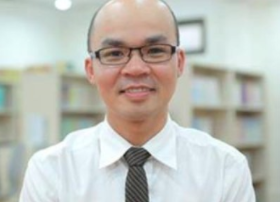
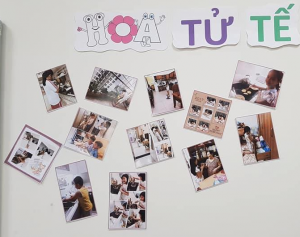

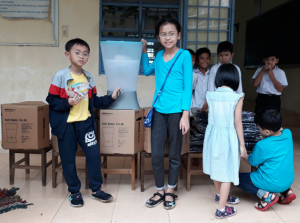 Learning about kindness towards people and the environment is a fundamental aspect of teaching students lessons focused on the
Learning about kindness towards people and the environment is a fundamental aspect of teaching students lessons focused on the 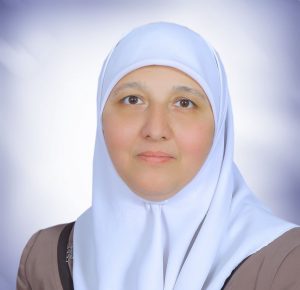
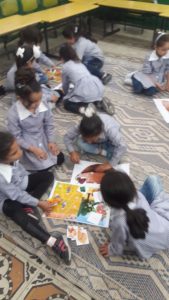
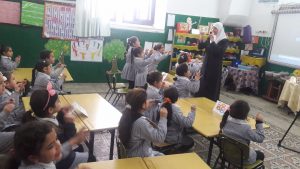 I have implemented an initiative called “children of the day – future leaders” based on planting seeds essential to the students of the first grade who will grow to become global citizens.The flexibility of the learning space supports the teaching methods and learning strategies I teach. This supports cooperative learning, is encouraging critical thinking, and creative thinking. Tables with wheels, a large carpeted space, and natural light all contribute to the students affect toward the learning. This design element is critical to supporting resilient, independent learners.
I have implemented an initiative called “children of the day – future leaders” based on planting seeds essential to the students of the first grade who will grow to become global citizens.The flexibility of the learning space supports the teaching methods and learning strategies I teach. This supports cooperative learning, is encouraging critical thinking, and creative thinking. Tables with wheels, a large carpeted space, and natural light all contribute to the students affect toward the learning. This design element is critical to supporting resilient, independent learners. This is a learning space that produces global citizens. These are students who are cultured and creative, responsible, collaborative, respectful of diversity, champions of justice and peace, are true to their values, and focused on knowledge and skills to make a better life. The design of our space includes opportunities for students to cultivate leadership, something they will someday use to contribute to society.
This is a learning space that produces global citizens. These are students who are cultured and creative, responsible, collaborative, respectful of diversity, champions of justice and peace, are true to their values, and focused on knowledge and skills to make a better life. The design of our space includes opportunities for students to cultivate leadership, something they will someday use to contribute to society.
 I’m a natural science teacher. The concept of Space2Learn really resonates for me as I wanted to go to space – as in outer space – to explore and learn. I applied to NASA’s Educator Astronaut Corps and was in the top 10% of finalists. While I didn’t get to go to space, I have made sure that students get outside of indoor classroom spaces into the local environment.
I’m a natural science teacher. The concept of Space2Learn really resonates for me as I wanted to go to space – as in outer space – to explore and learn. I applied to NASA’s Educator Astronaut Corps and was in the top 10% of finalists. While I didn’t get to go to space, I have made sure that students get outside of indoor classroom spaces into the local environment.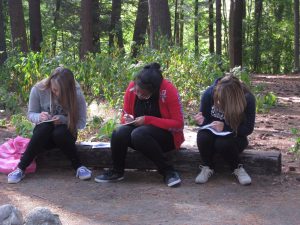 Placing their feet directly on the Earth makes them global students. The student’s learning space is the surrounding air conditions, what’s in the distance and close up, and in the space between students, as they observe and ask questions. All of this, however, has to be grounded with strong content, competency development, and rigorous expectations. Getting your students outside is fantastic, but you have to be highly organized to make it more than a walk in the park. Here’s a strategy to communicate to students and guide your outdoor education work…
Placing their feet directly on the Earth makes them global students. The student’s learning space is the surrounding air conditions, what’s in the distance and close up, and in the space between students, as they observe and ask questions. All of this, however, has to be grounded with strong content, competency development, and rigorous expectations. Getting your students outside is fantastic, but you have to be highly organized to make it more than a walk in the park. Here’s a strategy to communicate to students and guide your outdoor education work… High school science students learn outside. Why not learn science where the science naturally exists? Biology, botany, ecology, environmental science are just some of the topics to explore. I’m inspired to see students engaged in outdoor activities using the strategy above as the conduct cloud observations, tree measurements, biodiversity mapping, soil sampling, specimen collection and more.
High school science students learn outside. Why not learn science where the science naturally exists? Biology, botany, ecology, environmental science are just some of the topics to explore. I’m inspired to see students engaged in outdoor activities using the strategy above as the conduct cloud observations, tree measurements, biodiversity mapping, soil sampling, specimen collection and more.
